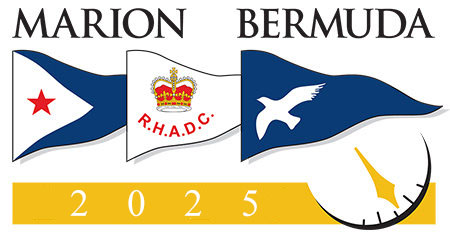On the downloadable forms page are three forms which I designed for my own use. They represent my own thought process in the steps of reducing sights. There are other form s from such sources as the Power Squadron and the nautical almanac and numerous published “how to” books on celestial navigation.
The nice thing about a line of position is that you can do it any time, with any body. You don’t have to wait for the sun’s noon passage, and while the sun by far is used the most, there are also four navigational planets, there is the moon, and there are over fifty stars to use. Learning how to do a line of position gives you much more flexibility which you will likely need in changing weather conditions. A line of position has more steps and takes longer to calculate, but unlike the noon sight of the sun which takes time to observe throughout its rising and falling near its zenith, an LOP sight can be taken instantaneously. Exact time and altitude is all you need.
How to do a Line of Position
The LOP form is the one that I use for everything except the noon fix. The process of reducing a time-sight to find an LOP amounts to the details which attend four basic steps:
- Correct the sextant reading to get HO (height of object)
- Convert the time of the sight to LHA (local hour angle of the body)
- Using the LHA and Declination from the time of your sight, look up the HC (predicted height of object) in the tables of a whole line of latitude near you.
- Subtract the difference between the HO and the HC to find your location and plot it on paper.
Step One
The first step involves the box which corrects HO. When you get a raw sextant reading, called HS, that reading is not really the altitude of the body. You must correct it for various factors so that you get the true height of the object, or what is called the HO. The sextant reading must be corrected for your eye level, because the horizon-to-body angle will be larger the higher you are. That correction is called the DIP, presumably because the horizon is “dipped” below your eye point. As a result, if the height of your eye-point adds to the angle of your sight, you must subtract that amount from the sextant reading. There is a table in the front cover of the almanac, page A2, which gives you the dip amount corresponding to your height of eye.
I have included the IE, or index error in the form, but I rarely use it because my sextants are always checked for zero against the horizon before each sight and because the sextant certificates show no appreciable error when the sextants are checked against the horizon, I do not normally add or subtract an IE. Checking your zero should be a routine practice. Just aim the sextant at the horizon and bring the split images together. If the sextant reads zero, your have no error. If you do not get a perfect zero reading on the horizon, you can adjust it. Most sextants come with a little wrench so that you can set the sextant to zero and then adjust the horizon images so they are coincident. If you are in a hurry and don’t have time to adjust the sextant, make sure to add or subtract the error that you find when you do your arithmetic.
There is a table, also on page A2 of the almanac, which will give you the amount to add (if it’s the lower limb) or subtract (if it’s the upper limb) depending on the apparent altitude of the sun. All this table does is correct your sight to the middle of the sun, where it belongs. The table also corrects for atmospheric refraction, which is why the LL number changes according to the altitude of the sun.
One note about my form “HO Correction Moon.” This is for the moon only, and I print this on to the back of the LOP form for those few cases that I am doing a moon sight. Again, all it is for is to correct the HS to the true altitude of the moon, which moves faster and has more refraction and parallax errors than any other body. For this reason, many navigators do not use the moon. I would still encourage you to learn it after you have mastered the other bodies. We will skip this for now and come back to it.
Step Two
Now on to step two, the second box, which results in the LHA, or Local Hour Angle. Remember that when you do a sight, you get two pieces of information. The HS, or sextant reading, and the time. This step is to make use of that time and convert it to a usable form. If our clock faces were marked off in degrees and arc-minutes instead of hours and minutes, we wouldn’t have to convert the time to arcs. It actually would make more sense, since our days are based on the earth’s rotation. In any case, to get the Local Hour Angle, we must first convert time to arc degrees and minutes. This number is one of the numbers you will need to use in the reduction tables to find what your predicted celestial body’s altitude would be if you were on a whole number of latitude.
Local Hour Angle is the angle between you and the body that you have used for your sight, at the time of your sight. To find it, you must first find the GHA (Greenwich hour angle) of the sun for the time of your sight. Go to the daily pages in the almanac, find the day and Greenwich hour of your sight. Next to the whole hour will be the GHA for that hour. Here in the west, Greenwich time is ahead of us, so make sure you have the right day. If you are doing an evening sight, it could be tomorrow in Greenwich. Write the GHA down on the form, but at the same time, be sure to record the declination which is right next to the GHA in the almanac daily pages. Record the declination on the other side of the form. We will use that later.
Now you have the whole-hour GHA, but you still have to add in your minutes and seconds. If you took your sight at 16:33:25 (sixteen hours, thirty-three minutes and twenty-five seconds), all you get from the daily page is the GHA for 16 hours. You still have to add in those thirty-three minutes and twenty-five seconds. Go to the back of the almanac to the yellow pages. Yes, I know, some versions of the almanac from non-government sources are not yellow. I prefer the almanac which is jointly published by the United States Naval Observatory and Her Majesty’s Nautical Almanac Office. And I think it’s cool. I mean, talk about tradition.
In the yellow pages section, also known as the “increments and corrections” pages, there is a column for each minute of the hour, and sixty rows, one for each second. Find your minutes and seconds row and column for the your “increment” of the hour. Now add that to your GHA of the whole hour that you got from daily pages. Remember, if, when you are adding, you get seconds or minutes of 60 or more you must carry to the next column. You are not in base ten!
There is a v number in the LHA box which has to do with the moon or planets, so don’t worry about that right now.
To get your final LHA, subtract (if your longitude is West) your assumed longitude from the GHA total. What this does is place the body (sun, planet, star) at the correct longitude angle relative to your position.
Now a little thought experiment. Just for instance, suppose you got a total GHA of 70 degrees 44 minutes. This means that the geographical position of the sun at the time of your sight, measured west from Greenwich, was 70 deg. 44’. You did your sight from Marion, so your assumed longitude (dead reckoning, as it were) is also 70 deg. 44’. Subtract 70 degrees 44' from the GHA total and you get an LHA of 0. Voila! That means there was no Local Hour Angle, or in other words, you happened to take your sight exactly at local noon. The sun is directly overhead. It also means that if you are in the northern hemisphere, the sun will have a bearing of 180 degrees, or due south. In navigation this is called the azimuth. If you are in Europe, your longitude is East, which means you would add your assumed longitude to the GHA.
To further illustrate this concept, if you had taken the sight in the morning the sun would have been east of you, somewhere over the Atlantic Ocean, which means the GHA of the sun would be some number less than 70 degrees. Let’s say you took your sight at 10:00 am local time. Depending on the season, let’s say that’s 14:00 Greenwich time. Today, March 25th 2014 the GHA, or geographic position of the sun at 14:00 is 28 deg. 30.9’. Subtract your assumed longitude of 70 degrees from 28 degrees? Well, the obvious trick to that is to add 360 to it first. So 70 degrees from 388 is 318. Thus, your local hour angle to the sun is 318 degrees toward the west, all the way around the world and back to the middle of the Atlantic. Yes, I know that the simple way to visualize it is that the sun is 43 degrees to your east, over the Atlantic Ocean. It’s morning. You know where the sun is. But for purposes of convention, the process, how the tables are devised, etc., we always measure to the West.
There is one more little trick to this LHA thing. When you get an LHA for your time and location, you only want a whole number. The tables don’t care about increments of an LHA. So when you subtract your assumed longitude, subtract the closest longitude plus the increment of minutes so that the result is a whole number. The example above was a GHA of 388 degrees, 30.9 minutes. So subtract 70 degrees 30.9 minutes from the GHA so you get a nice whole number LHA. The 70 degrees 30.9 minutes now becomes your assumed position when you go to plot your Line of Position. Record it in the A.P. box (assumed position) on the right side of the form.
Believe it or not, you have done all the hard work. You could correct the declination with an increment from the back of the almanac, but for a long time I never bothered. The d correction factor for the sun is found at the bottom of the daily page column. This correction is a small increment which adjusts the declination change between whole hours of GMT. The change in declination is greatest close to the equinoxes, least in the middle of summer and winter. It’s never more than 1, and depending on the season it’s often less, which means the correction would result at most in a difference of one mile in your final position. This number is taken to the same increments and corrections page as the one where you got your minutes and seconds correction, under v or d correction.
Step Three
The next step is to look up your HC, or predicted height of object in the tables. This is the fun part, because you will see right away if you are close in your sight and calculations and whether you did it right.
Open up HO 249 and find your latitude pages. Since we are in Marion, our assumed latitude is 41. There are half a dozen pages which include latitude 41. Half of them are for a declination which is the same as your hemisphere, half for declinations which are contrary. For example, if you are in Marion and it’s before March 21st, you are in North latitude with a contrary, or south declination because the sun is still below the equator. Looking across the top of the “contrary” pages, find the whole number column of your declination. When you find the correct column, look down the left or right edges of the page and find the LHA row with the LHA which you calculated above. Where the correct row and column meet will be three numbers. The HC will be the first number. Next will be a “d” number (not to be confused with the “d” from the almanac). The last number will be the z number. Record the first two in the HC box, the last in the Azimuth box. You are almost there. The HC (which has one more correction, so I’ve labelled it HCu) should already be pretty close to your HO, within 60 minutes of an arc.
The last correction you need to make is to the minutes of HCu to get a final HC. Using the “d” number, go to the last page of the reduction table book 249 vol. 2 or 3 and enter Table 5. Find the “d” number down either side of table 5, and the nearest minutes of declination across the other axis. The column and row where they meet in the table will give you a number to add or subtract from HCu, depending on whether the “d” number was positive or negative.
Add or subtract that number from the HCu and you get your final HC. The HC, as explained above, is the reading you would have had on your sextant (after corrections) if you were standing on the actual line of latitude.
Step Four
Now, bring the HC down to the Intercept box and bring the HO also down to the Intercept box. One will be larger than the other, so place and label them so the smaller one can be subtracted from the other. The difference between the two will usually be some minutes (i.e. nautical miles) under 60, 60 being a whole degree. If the HO is smaller, than the difference between the two will place the line of position farther from the body (sun) than the HC. If the HO is larger, than the line of position will be closer to the body.
Now a little explanation about what you just found. You need to understand this to do the final step, plotting your line of position on the chart or plotting sheet. A line of position is not really a line. Suppose you went to the Statue of Liberty with your sextant. You walk around Lady Liberty and you take sights of the top of the torch. You can imagine that there is a perfect circle that you could walk around Liberty Island, any point from which would give you exactly the same reading to the top of the torch. If you approach the statue too closely, the angle would get larger. If you are too far away, the reading would be smaller. Stay on the perfect circle and your sextant will always line up perfectly with the torch at that one setting.
The sun is the same. There is a circle, a really big circle, thousands of miles in diameter, from which, if you took sextant readings of the sun, you would get the same number. The center of the circle would be where a straight line from the center of the earth to the center of the sun would pierce the earth’s surface. That is the “geographic position” of the sun. When we create a line of position, it’s really a small arc-segment of that giant circle with a very large radius. That is why solutions which involve several local points of assumed latitude seem to describe a line, as it did with Sumner in 1838.
Knowing your assumed position from dead reckoning assures that you don’t erroneously use the wrong part of the circle.
Now, if you think about it, you know that the azimuth, or the direction the sun bears is perpendicular to the arc-segment of the circle, aka, the line of position. At noon, the sun bears due south. The line of position at noon, therefore, is a line of latitude perpendicular to the local meridian. At any other time of day, the direction of the sun will be some other compass bearing, or azimuth, perpendicular to which will be your line of position.
When you get your Z number from the tables, that number is telling you the direction of the sun or body you used at the time of your sight. When you plot the LOP, first you must draw an azimuth line oriented in the direction of the body. When you plot that line, it must originate at your assumed position: the whole number latitude you used in your calculations, and the derived, assumed longitude when you found your LHA; that longitude which you subtracted to get a nice whole number LHA. In the above example it was 70 degrees 30.9’. When you draw the azimuth line, remember that the LOP may be toward or away from the assumed position, so draw your azimuth line accordingly.
One more thing about the Z number. In the morning, the sun is obviously east, so it has an azimuth of less than 180 degrees. But in the afternoon, you know logically that the azimuth must be larger, toward the west. When it is, the Z number must be converted to Zn, the true azimuth. If you look at the tables you will see why this conversion must be done. For compactness, the tables only go up to a Z of 180. When the LHA is greater than 180, the Z and Zn are the same. In the afternoon, in order to get a west progressing azimuth, you subtract the Z number from 360 to get that western azimuth. If the tables were not so, they would be twice the size they are. The tables pages have a reminder in the corner of every page: LHA greater than 180, Z=Zn. LHA less than 360, Zn=360-Z.
Now that you have plotted your azimuth line, it’s time to finally draw your LOP. With your dividers or compass mark out the difference in minutes (a minute = nautical mile) between the HO and HC from your assumed position on the azimuth line where it crosses your whole number assumed latitude and draw a line at right angles to it. If the HO was the smaller number, you are farther from the sun than HC, so mark off your LOP away from your assumed position. If HO is larger, then go toward the sun when you mark of the distance. You’re done.



















